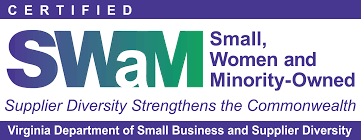Assisting Industry with Refrigerant Reporting and Compliance
It’s not just good business to have a plan regarding refrigerant use — it’s the law. ONE Environmental can make sure your company complies with current regulatory requirements.
ONE Environmental Consultant Austen Meyer has expertise in this area and new regulations that went into effect in 2020.
Facilities must document and retain service and maintenance records for appliances containing refrigerants, depending on the unit type and refrigerant capacity. Often, facilities are unaware of the specific requirements (i.e., calculated leak rate, successful initial and follow-up verification tests, leak inspections, etc.) and inadvertently are not in compliance with the refrigerant regulations.
Facilities are also required to submit a report to EPA (due March 1st each year) for specific types of units, if in the calendar year 125% of the unit’s capacity is added to the appliance.
Refrigerants, specifically hydrochlorofluorocarbons (HCFCs), fall under Section 608 of the EPA’s Clean Air Act. Facilities with units greater than 50 pounds that leak or are serviced with more than 125% of the unit’s capacity in the previous calendar year are subject to reporting requirements under the federal regulation found in 40 CFR 82.157. The latest update became law on April 10, 2020.
Units with refrigerants that contain 50 pounds or more of any Class I or Class II Ozone- Depleting Substances (ODS) fall into this category. One caveat, substitute refrigerants (R-410a) are now exempt from the recordkeeping and reporting requirements, so realistically only older units that contain R-22 or R-123 are subject to the March 1reporting deadline.
A leak rate must be calculated for any appliance that requires service. Keeping strict records for these calculations is essential, and often, this is where missteps can occur, Meyer said. Facilities often rely on the servicing contractor to calculate the leak rate, whereas the responsibility falls on the owner/operator.
“The regulations can get a little confusing,” Meyer said, noting ONE can assist clients with knowing their responsibility and ensuring all necessary documentation is complete.
Performance and recordkeeping of verification tests are another compliance area often overlooked. There are two types of verification tests: the initial test that must be completed to make sure that repairs were successful before refrigerant is added back into the appliance and a follow-up verification test that must be completed within 30 days of the successful initial verification test.
Another troublesome area is leak inspection. If a leak exceeds a certain threshold, depending on the capacity and type of the unit, an inspection must be performed either annually or every three months.
“The leak inspection must be conducted by a certified technician, but the owner/operator must document that the inspection was completed,” Meyer said.
When ONE works with a new client, the first step involves a comprehensive review of the facility and an audit of their current refrigerants program to determine compliance with the applicable regulations.


